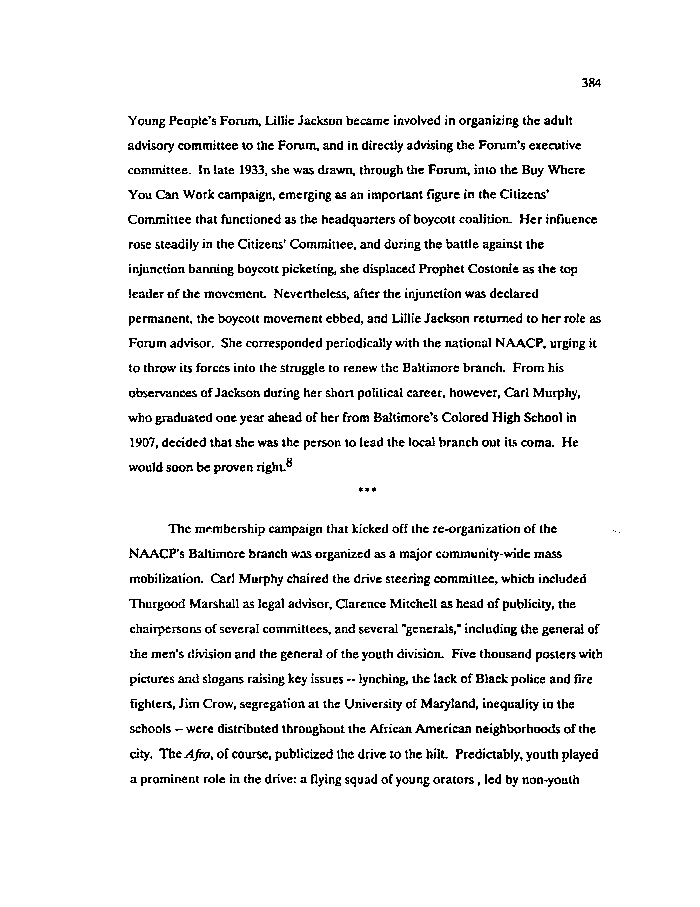|
384
Young People's Forum, Lillie Jackson became involved in organizing the adult
advisory committee to the Forum, and in directly advising the Forum's executive
committee. In late 1933, she was drawn, through the Forum, into the Buy Where
You Can Work campaign, emerging as an important figure in the Citizens'
Committee that functioned as the headquarters of boycott coalition. Her influence
rose steadily in the Citizens' Committee, and during the battle against the
injunction banning boycott picketing, she displaced Prophet Costonie as the top
leader of the movement. Nevertheless, after the injunction was declared
permanent, the boycott movement ebbed, and Lillie Jackson returned to her role as
Forum advisor. She corresponded periodically with the national NAACP, urging it
to throw its forces into the struggle to renew the Baltimore branch. From his
observances of Jackson during her short political career, however, Carl Murphy,
who graduated one year ahead of her from Baltimore's Colored High School in
1907, decided that she was the person to lead the local branch out its coma. He
would soon be proven right.8
*••
The membership campaign that kicked off the re-organization of the
NAACP's Baltimore branch was organized as a major community-wide mass
mobilization. Carl Murphy chaired the drive steering committee, which included
Thurgood Marshall as legal advisor, Clarence Mitchell as head of publicity, the
chairpersons of several committees, and several "generals," including the general of
the men's division and the general of the youth division. Five thousand posters with
pictures and slogans raising key issues — lynching, the lack of Black police and fire
fighters, Jim Crow, segregation at the University of Maryland, inequality in the
schools - were distributed throughout the African American neighborhoods of the
city. The Afro, of course, publicized the drive to the hilt. Predictably, youth played
a prominent role in the drive: a flying squad of young orators, led by non-youth
|

